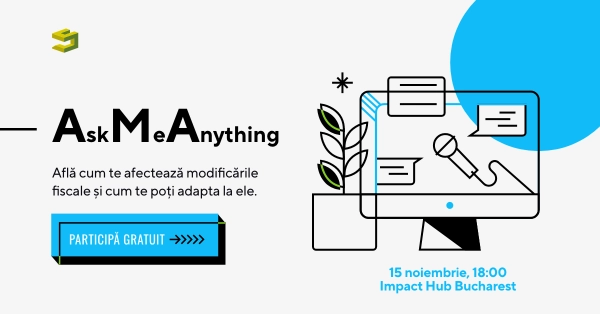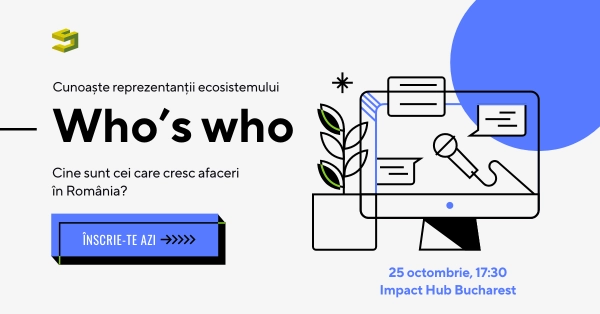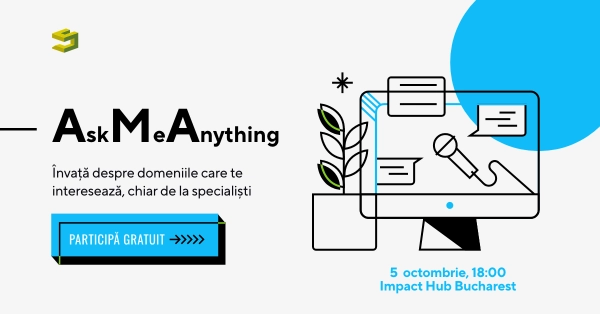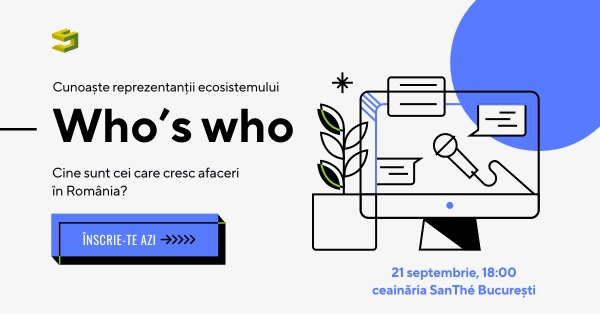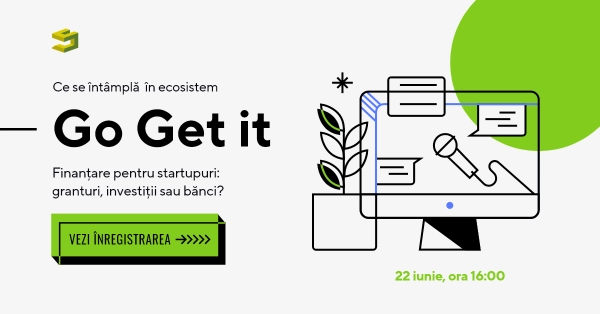In November 2021, the second Circle Webinar took place. On 3 separate dates, 81 participants joined us to learn together. This is the recording. The European project Erasmus + The Circle seeks to support entrepreneurs in both creative and general fields in Romania, Italy and Spain, the 3 project partners. This is an international initiative enabling professionals to exchange experiences, learning and training on key issues, such as the project’s second virtual meeting on the entrepreneur’s digital know-how and wellbeing.
The Webinar Slides
In this second session of The Circle, we learned about how to use online tools & the connected digital universe to your advantage; to make life easier, for yourself and for your business:
- Where to start when it comes to digitalisation
- The many ways you can take advantage of everything digital has to offer – from NFT to complementary income sources to your primary activity
- Choosing the right channels in digital marketing
- How to create a calendar for your online presence
- Q&A with the trainers and special guests
- Live practice sessions and group conversations
- + Many more
Digital has become part of our everyday routine – for most of us, picking up the phone is (most likely) the first thing they we do after waking up. And as any other immersive experience, it has its perks and downsides. This is why we should keep an eye on its overall effect on our lives and take an objective look at its advantages and possible issues.
During the Circle program and the toolkits we will develop, digital wellbeing and subsequent best practices will be one of the main subjects. Why is that? Because it can have a huge impact on individuals’ and organizations’ evolution, resilience in times of crisis and thriving during calmer times. So let’s find out more about it! :)
What does digital wellbeing actually mean
Digital Wellbeing is a term that refers to the way in which technology and digital services affect people's mental, physical, social, and emotional wellness. The objective of increasing digital wellbeing is to build technology in such a manner that it encourages healthy use and helps users maintain a healthy lifestyle.
There are four pillars of digital wellbeing – or 4 angles to use when looking at the concept.
1. Mental wellbeing
The thing with digital is that it gives access to so much and actually to so little – so we might tend to view other people’s lives, whom we perceive as successful or as role models, in an idealised manner that affects the view on our own lives. Truth is real life is rarely glamourous – something we must all remember when we might use online as a form of escapism.
At the same time, online has enabled so many people to reach out for help and for others to offer it, supporting them throughout the process.
- Negative impact: Emphasising one’s differences; Comparing oneself to others
- Positive impact: Finding sources of support and help; Connecting with other people who are experiencing the same issues
2. Emotional wellbeing
Do you ever panic when you can’t find your phone? Or dare you constantly checking it and browsing social media to make sure you haven’t missed anything? If that has become an automatism, well in the long run its effects can be negative. Mostly because they give you a false sense of connection, when in fact they make you disconnect to the real world.
- Negative impact: Encouraging addictive behaviours; Compromising online safety; Promoting feelings of self-worth
- Positive impact: Creative a sense of belonging: Helping people to reach their potential (through learning opportunities or making connections); Providing opportunities for creativity
3. Social wellbeing
While digital helps connection & discovery, it can sometimes also highlight & encourage extremist views and aggressive stands towards what people perceive as ”different” to their own views.
At the same time, digital gives access to endless educational & practical resources, as well as solutions to current challenges (eg: online courses during lockdowns, remote work etc)
- Negative impact: Experiencing or engaging in cyberbullying; Being a victim of crime (eg: stalking, grooming)
- Positive impact: Preventing isolation; Connecting with others (family friends, communities); Enabling participation (as a citizen or community member); Supporting others; Collaborating; Sharing content with other people
4. Physical wellbeing
Sedentarism is probably one of the most important health issues of modern life – as a lot of people work in offices, the focus on exercise and time spent outdoors is radically affected (and the pandemic & lockdowns didn’t help either). People might trade exercise & active leisure to activities that seem more ”relaxing”, but which are actually encouraging standing and unhealthy behaviours.
At the same time, if used in a constructive manner, digital can help maintain a healthy lifestyle and give the right tools to enable that.
- Negative impact: Impact on muscular and skeletal health; Impact on sleep patterns
- Positive impact: Using fitness health; Monitoring health; Assistive technologies for physical conditions (temporary or permanent)
Using digital the right way – a few tips & tricks
- Remember to always use digital mindfully and with a clear intention – pay attention to the feelings it triggers and its effect on your everyday life.
- Make sure you don’t get caught up in aggressive, hurtful online disputes – try and use the question ”Will my comment make the world a better place or a worse one?” before hitting enter. Preserve your energy for more appropriate contexts and don’t fuel the collective anger that’s pouring in all the wrong places – changing the world can and should come from a constructive place and mindset.
- At your workplace, explore and test different tools to make sure you discover those right for you and your activity. Discuss them with your colleagues, ask for help and support in implementing them if necessary.
- Make sure security – both professional and personal – is something you take into account in your online activity.
- Take breaks and actively evaluate the time you spend online and how you spend it.
Digital Marketing - what is it?
Digital marketing, often known as online marketing, is the promotion of companies using the internet and other kinds of digital communication in order to engage with potential clients. As a marketing channel, this comprises not just email, social media, and web-based advertising, but also text and multimedia messaging.
Stages to go through when working on your digital marketing strategy
- Stage 1: Understand Your Industry
- Stage 2: Understand Your Competition
- Stage 3: Understand Your Buyers
- Stage 4: Understand the Digital Channels that will work for you
- Stage 5: Understand Marketing Metrics & Goals
- Stage 6: Create Digital Marketing Strategy – the 5Ds (Digital Technology, Digital Data, Digital Channels, Digital Metrics, Digital Devices)
Things to keep in mind while creating your Digital Strategy
- Build your unique positioning & messaging
- Build your buyer personas.
- Identify your business goals & marketing goals
- Prepare the list of digital marketing tools you'll need.
- Evaluate your existing digital channels that work for you
- Audit and plan your owned media campaigns.
- Analyzing your digital marketing strategy’s past success and failures
- Identify Your Means (& Stick to Your Budget)
- Measure and monitor the performance of your digital marketing strategy and to change elements where needed.
- Setup Inbound Marketing
- Understand the Digital Sales Funnel
- Focus on Blogging
- Focus on Mobile Optimization & SEO Friendly Content
Blockchain and NFTs
What is Blockchain technology?
Blockchain technology is an open, distributed ledger that may effectively and permanently record transactions between two parties. Transactions are agreed to by the participants in the blockchain when entered into the ledger.
- Transactions are irreversible.
- All transactions are verifiable.
- Ensures the records' long-term viability
A cryptocurrency (such as bitcoin or ether) is a digital currency, a metric of worth that only exists on the blockchain—commonly referred to as a "coin" or "token".
What are NFTS?
In essence, an NFT is a collectible digital item that has value both as a cryptocurrency and as a piece of art or culture. NFTs are being viewed as a value-holding investment in the same way that art is. But how do you do it?
Let's start with a definition of the phrase. NFT stands for non-fungible token, which is a sort of cryptocurrency similar to Bitcoin and Ethereum. However, unlike a normal coin on the Bitcoin network, an NFT is one-of-a-kind and cannot be swapped for other NFTs (hence, non-fungible).
So, what distinguishes an NFT from a standard cryptocurrency?
The file contains additional data, elevating it above plain cash and allowing it to be used for, well, anything. NFTs come in a variety of shapes and sizes, but they may be a piece of digital art or a music file — anything unique that can be saved digitally and considered valuable. In essence, they are similar to any other tangible collector's item, except that instead of an oil painting on canvas to display on your wall, you receive a JPG file.
NFTs - Smart contract
The code creating the NFT is called a “smart contract”.
- The creator can include any terms that are then captured on the blockchain
- The majority of NFT contracts today are very simple (ownership)
However, NFT code may also include:
- Descriptions of the NFT's features or traits
- Financial terms
- Specific rights, such as IP rights in the underlying asset
NFTs - Digital objects
An NFT is made up of digital objects that represent both tangible and ethereal objects, such as:
- Art
- GIFs
- Videos and sports highlights
- Collectibles
- Virtual avatars and video game skins
- Designer sneakers
- Music
Where to start if you want to create your first NFT?
Anyone with a crypto wallet has access to a number of trustworthy NFT platforms or NFT markets. Rarible, SuperRare, OpenSea, Mintable, Nifty Gateway, and more are examples. Some big centralized exchanges (CEXs) have lately launched their own NFT marketplaces, such as FTX and Binance.
Furthermore, because OpenSea continues to be the most popular NFT marketplace, we will focus some of our efforts there. As a result, we'll look at how to mint an NFT on OpenSea in further detail.
However, we must emphasize that this is a centralized method of issuing NFTs. As a result, it is not something we recommend to individuals who are experienced or have strong coding skills. It is, however, by far the quickest and easiest approach to create an NFT.














